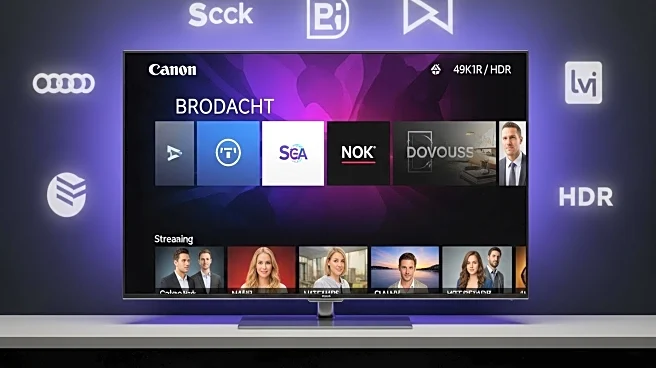What's Happening?
The landscape of TV advertising is undergoing significant changes as it marks 70 years since its inception. The definition of 'TV' is evolving, influenced by new platforms and changing viewing habits. Traditional linear TV is seeing a decline in viewership, with more audiences shifting to digital platforms such as YouTube and subscription video-on-demand (SVOD) services like Netflix and Amazon Prime. Despite this shift, TV remains a profitable advertising medium, accounting for 54.7% of total advertising-generated profit. The rise of connected TV (CTV) and ad-supported streaming services is reshaping how advertisers allocate their budgets, with investment in SVOD, AVOD, and FAST platforms more than doubling from 2023 to 2024.
Why It's Important?
The evolution of TV advertising has significant implications for advertisers and broadcasters. As audiences migrate to digital platforms, advertisers are adjusting their strategies to maintain reach and effectiveness. The shift towards digital and on-demand viewing presents new opportunities for targeted advertising, but also challenges traditional broadcasters to innovate and diversify their revenue streams. The continued profitability of TV advertising underscores its importance in media plans, but the growing influence of digital platforms like YouTube and SVOD services highlights the need for a balanced approach. This transition affects how brands engage with consumers and how advertising budgets are distributed across media channels.
What's Next?
Broadcasters are expected to continue diversifying their revenue streams by exploring alternative advertising formats such as product placement and branded content. The development of new measurement tools, like the joint initiative Lantern by ITV, Sky, and Channel 4, aims to provide more accurate insights into TV advertising's effectiveness. As the industry adapts to changing consumer behaviors, the focus will likely be on integrating traditional and digital advertising strategies to maximize reach and impact. The ongoing evolution of TV advertising will require continuous innovation and adaptation from both advertisers and broadcasters.
Beyond the Headlines
The shift in TV advertising raises questions about regulatory frameworks, especially as platforms like YouTube gain prominence. The definition of TV and its regulatory implications could impact how content is produced and consumed. Additionally, the role of public service broadcasters and their ability to compete with global online platforms may influence future policy decisions. The ethical considerations of targeted advertising and data privacy in the digital age also present challenges that the industry must address.











